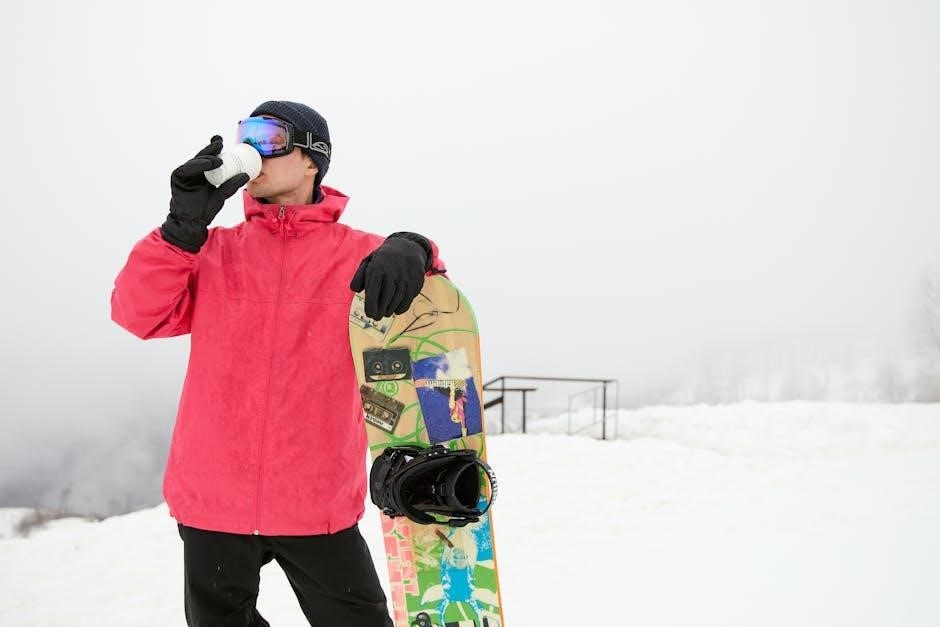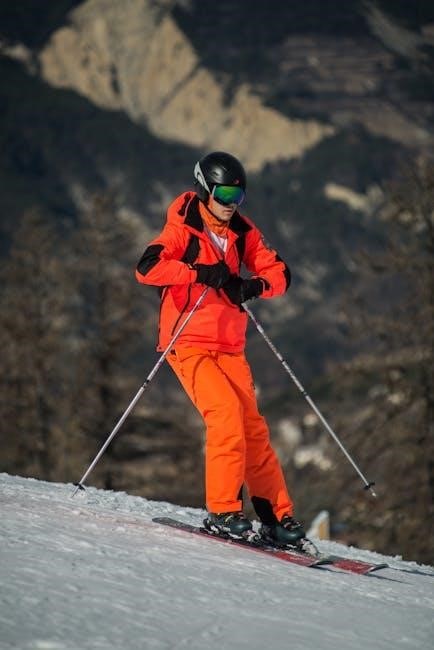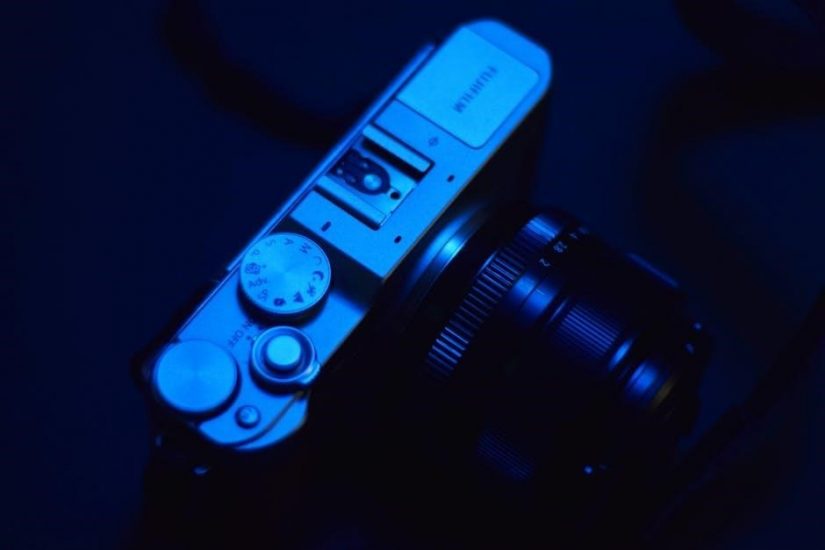Ski goggle lens colors are designed to optimize vision in varying snow and light conditions, enhancing contrast and reducing glare for clearer visibility on the slopes.

Importance of Lens Color in Skiing and Snowboarding
Lens color plays a vital role in skiing and snowboarding by enhancing visibility, reducing glare, and protecting eyes from harmful UV rays. Different tints optimize vision in varying light and snow conditions, improving contrast and clarity. Proper lens color helps skiers and snowboarders perform better by reducing eye strain and improving reaction time. Whether in bright sunlight, flat light, or snowy conditions, the right tint ensures clearer vision, making it safer and more enjoyable to navigate the slopes. Choosing the appropriate lens color is essential for maximizing performance and safety in diverse mountain environments.
Factors Influencing Lens Color Selection
Light conditions, snow types, personal preference, and weather forecasts shape lens color choices, ensuring optimal visibility and comfort for skiers and snowboarders.
Light Conditions and Their Impact on Lens Choice
Light conditions significantly influence lens color selection. In bright, sunny weather, darker tints like black or gray reduce glare and protect eyes from intense UV rays. For flat or overcast conditions, lighter lenses with higher VLT enhance visibility. Photochromic lenses adapt to changing light, offering a versatile option. Low-light situations benefit from clear or amber tints, which maximize available light. Polarized lenses are effective in reducing glare from snow surfaces. Matching the lens tint to ambient light ensures optimal vision and comfort, making it safer and more enjoyable to ski or snowboard in diverse environments.
Snow Conditions and Lens Tint Preferences
Snow conditions play a crucial role in selecting the right lens tint. In snowy or foggy weather, high VLT lenses with rose or amber tints improve contrast, making it easier to spot terrain features. For icy or hard-packed snow, mirrored coatings reduce glare from reflective surfaces. Powder days benefit from medium-tint lenses that balance light transmission without sacrificing clarity. Clear lenses are ideal for low-light, snowy conditions, ensuring maximum visibility. Choosing a lens tint that complements the snow type enhances your ability to navigate the terrain safely and efficiently, regardless of the winter conditions you encounter.
Common Lens Tints for Ski Goggles
Ski goggles feature various lens tints, including clear, amber, rose, copper, and dark mirror-coated options, each designed for specific light and snow conditions to enhance visibility and comfort.
Clear and Low-Light Lenses
Clear and low-light lenses are ideal for overcast or snowy conditions, offering maximum visibility without altering color perception. These lenses minimize eye strain and provide excellent UV protection, ensuring sharp vision in flat light. They are perfect for stormy or cloudy days when light is limited. Photochromic options adapt to changing conditions, darkening slightly in brighter moments while remaining clear in low light. These tints are preferred by skiers who need unobstructed views and natural color accuracy to navigate challenging terrain safely and efficiently, making them a practical choice for variable weather situations on the mountain.
Amber, Rose, and Copper Tints
Amber, rose, and copper tints are popular for enhancing contrast and reducing eye fatigue in low to medium light conditions. These warm-toned lenses amplify color definition, making snow textures and obstacles more distinguishable. They are particularly effective in flat light, such as overcast skies or snowstorms, where visibility is reduced. Amber and copper tints also provide excellent UV protection while maintaining a natural color perception. Skiers and snowboarders favor these tints for their ability to boost clarity and reduce glare without darkening the view excessively, ensuring improved visibility and performance on the slopes during challenging weather conditions.
Dark and Mirror-Coated Lenses
Dark and mirror-coated lenses are ideal for bright, sunny conditions, offering superior glare reduction and UV protection. These tints are designed to minimize light transmission, ensuring comfort in intense sunlight often encountered at high altitudes or on reflective snow surfaces. Mirror coatings add an extra layer of glare reduction while maintaining a stylish appearance. Dark lenses, such as black or gray, are best suited for clear days, providing crisp vision without strain. They are less effective in low-light conditions but excel in preserving visual clarity when the sun is strong, making them a go-to choice for skiers and snowboarders in sunny environments.

Lens Technologies to Enhance Visibility
Advanced lens technologies like photochromic and polarized options enhance visibility by adapting to light conditions and reducing glare, improving clarity and comfort for skiers and snowboarders.
Photochromic Lenses for Variable Light
Photochromic lenses automatically adjust their tint in response to changing light conditions, ensuring optimal visibility. In bright sunlight, they darken to reduce glare, while in low light, they lighten to enhance clarity. This versatility eliminates the need to switch lenses, making them ideal for skiers and snowboarders who experience varying weather. These lenses also reduce eye strain by maintaining consistent color perception and contrast, regardless of light intensity. Their adaptive technology provides reliable performance, adapting within seconds to seconds to ensure clear vision in dynamic environments, making them a practical choice for all-day use on the mountain.
Polarized Lenses for Glare Reduction
Polarized lenses are specifically designed to minimize glare from reflective surfaces like snow and ice, improving visibility and reducing eye strain. By filtering out horizontally polarized light, they significantly reduce the intense glare that skiers and snowboarders often encounter. This feature enhances contrast and clarity, making it easier to spot uneven terrain, moguls, and icy patches. Additionally, polarized lenses often combine UV protection, ensuring comprehensive eye safety. While they may not be ideal for low-light conditions, they are a top choice for sunny days, offering unparalleled glare reduction and crisp, clear vision on the slopes.

Special Features in Ski Goggle Lenses
Advanced features like mirror coatings, photochromic technology, and polarized lenses enhance visibility, reduce glare, and adapt to changing light conditions, ensuring optimal performance and eye protection on the slopes.
Mirror Coatings for Reduced Glare
Mirror coatings on ski goggle lenses reflect sunlight, reducing glare and minimizing eye strain. These coatings are especially effective in bright conditions, enhancing visibility by reducing the intensity of reflected light. They also help maintain a cool appearance while providing UV protection. Mirror coatings are available in various colors, offering both functional and stylish benefits. This feature is particularly popular among skiers and snowboarders who face harsh, sunny environments. By reducing glare, mirror-coated lenses improve visual clarity, allowing athletes to perform at their best without discomfort caused by intense light reflection.
Visible Light Transmission (VLT) Ratings
Visible Light Transmission (VLT) ratings indicate the percentage of light that passes through a goggle lens. Higher VLT allows more light, enhancing visibility in low-light conditions, while lower VLT reduces light for brighter environments. For example, clear lenses often have a high VLT (around 90-100%), ideal for cloudy or snowy days, whereas dark-tinted lenses may have a VLT as low as 10-20%, suitable for sunny conditions. Understanding VLT helps skiers and snowboarders choose lenses that balance visibility and comfort across varying light conditions, ensuring optimal performance on the mountain.

How to Choose the Right Lens Color
Match lens tint to weather conditions, consider personal preference, and prioritize visibility needs for optimal performance on the mountain.


Matching Lens Tint to Weather Conditions
Choosing the right lens tint starts with understanding the weather. For sunny days, dark tints like black or mirror-coated lenses reduce glare and protect from intense UV rays. In overcast or stormy conditions, clear or low-light lenses with high VLT (Visible Light Transmission) enhance visibility. Amber or rose tints are ideal for flat light, common in cloudy weather, as they boost contrast. Photochromic lenses adapt automatically to changing light, offering versatility. Consider snow conditions too—bright environments call for darker tints, while softer light benefits from lighter hues. Matching your lens tint to the weather ensures optimal clarity and performance on the mountain.
Personal Preference and Visibility Needs
Personal preference plays a significant role in choosing ski goggle lens colors, as different tints can enhance or alter visual perception. Riders often opt for tints that boost contrast, such as amber or rose, to improve depth perception in flat light. Others may prefer mirror-coated lenses for their stylish appeal and glare reduction. Visibility needs vary too—some prioritize sharpness and clarity, while others focus on reducing eye strain. Balancing aesthetics with functional benefits ensures a tailored fit for individual skiing or snowboarding experiences, making lens selection a blend of style and performance tailored to personal comfort and visual requirements on the slopes.
Choosing the right ski goggle lens color enhances your skiing experience by optimizing visibility and comfort in various conditions, ensuring clarity and protection on the mountain.
Final Tips for Selecting the Best Lens Color
When choosing ski goggle lens colors, prioritize visibility and comfort based on weather and snow conditions. Consider VLT ratings to balance light transmission and glare reduction.
- Opt for clear or low-light lenses in cloudy or snowy conditions for maximum visibility.
- Choose amber or rose tints for flat light to enhance contrast and definition.
- Select dark or mirror-coated lenses for bright, sunny days to reduce glare.
- Invest in photochromic lenses for adaptability across varying light conditions.
- Test lenses in real-world scenarios to ensure personal comfort and clarity.
Ultimately, match your lens color to your skiing environment and preferences for optimal performance and enjoyment on the slopes.
